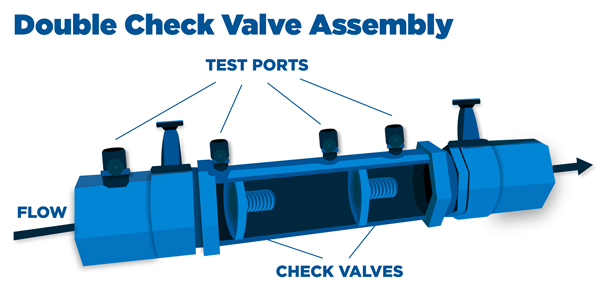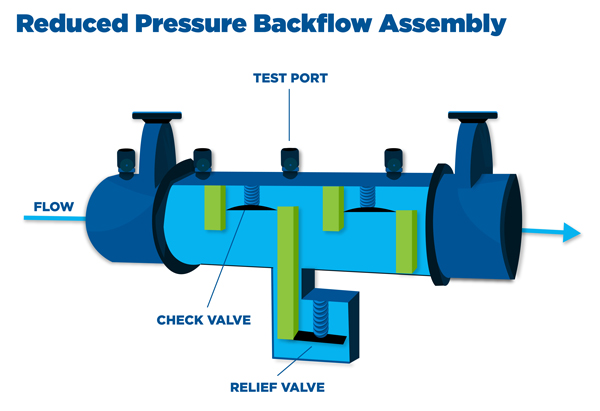About the Backflow Prevention Program
The goal of the Backflow Prevention Program is to ensure Vaughan’s water is safe for businesses, residents and visitors to drink and use.
What is the Backflow Prevention Program?
The City of Vaughan’s Backflow Prevention Program and the Backflow Prevention By-law 177-2020 (PDF) is designed to protect the City of Vaughan’s water system to safeguard the quality of water being delivered to businesses and residents. This is done by the installation of a Backflow Prevention Device that prevents discharge of contaminating substances into the drinking water system.
Who is Affected?
The Backflow Prevention Program applies to new and existing properties connected to the City of Vaughan's municipal drinking water system.
All properties under this program will be classified based on internal plumbing cross connections and how the property uses water. The Canadian Standards Association (CSA) B64 Series categorizes these cross connections into three different hazard levels:
- Minor Hazard (MH): This is any type of cross connection that involves a substance that does not affect health but only reduces the aesthetic quality of the water.
- Moderate Hazard (MoH): This is any minor hazard connection that has a low chance of becoming a severe hazard. The water’s aesthetic qualities have been further reduced and, under certain conditions, can create a danger to health.
- High or Severe Hazard (HH): This is any type of cross connection that involves water that has additives or substances that, under any concentration, can create a danger to health.
Properties that pose a minor risk included (but are not limited to):
- duplex housing with a shared water service
- residential properties
Properties that pose a moderate risk include (but are not limited to):
- dental offices
- hotels
- office buildings
- restaurants
- hair salons
Properties that pose a severe risk include (but are not limited to):
- automotive repair shops
- food processing plants
- carwashes
- dental surgery facilities
- medical clinics
Backflow Preventer Types
To protect the City's drinking water, one of two types of backflow devices will need to be installed and tested every year.

Double Check Valve Assembly (DCVA): This consists of two check valves that are designed to close during a backflow event. Water is designed to flow through only one way; when a backflow event occurs and water flows in reverse direction, the two check valves close and stop the flow of water. This is required for properties that are classified as a “Moderate Hazard.”

Reduced Pressure Principle Assembly (RP): This is similar to a DCVA, but it includes a relief valve to provide additional protection. When a RP device fails, it is designed to discharge water into a floor drain. This is required for properties that are classified as a “Severe Hazard.”
